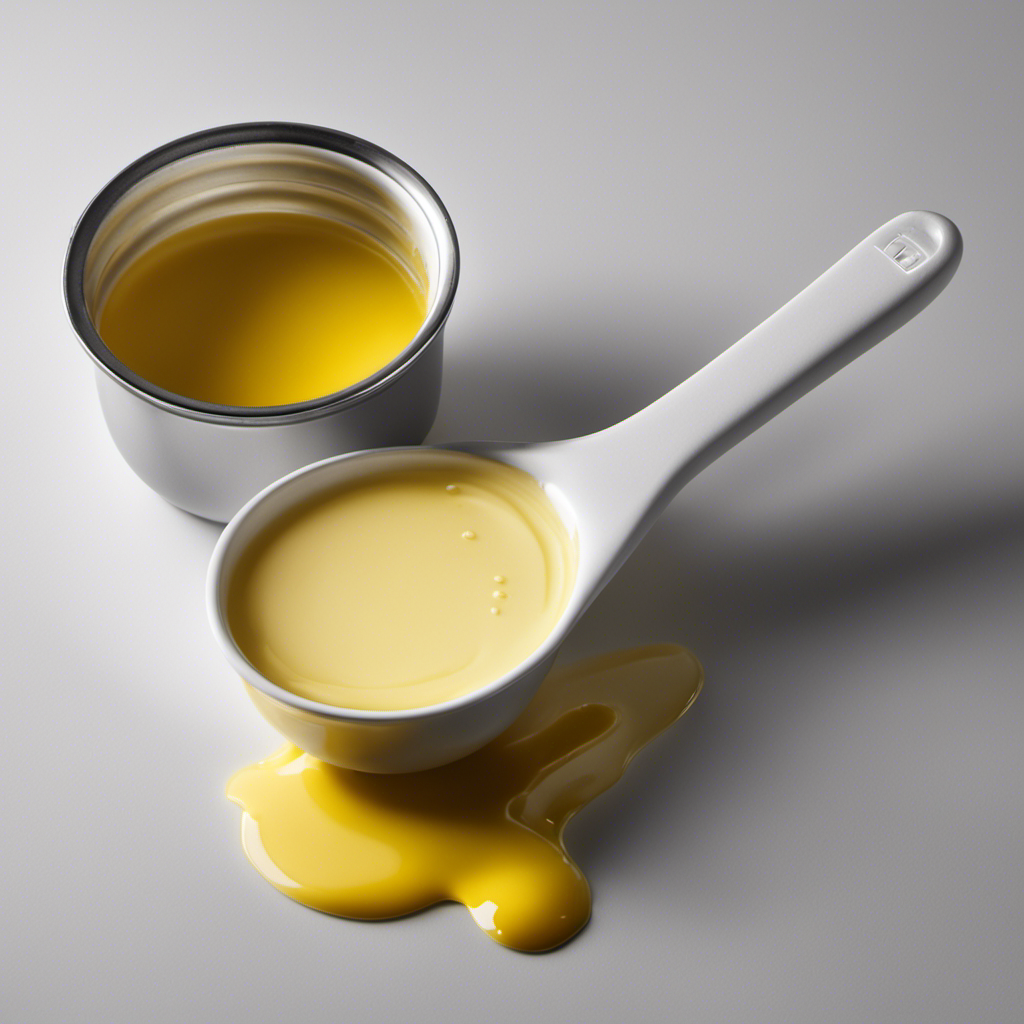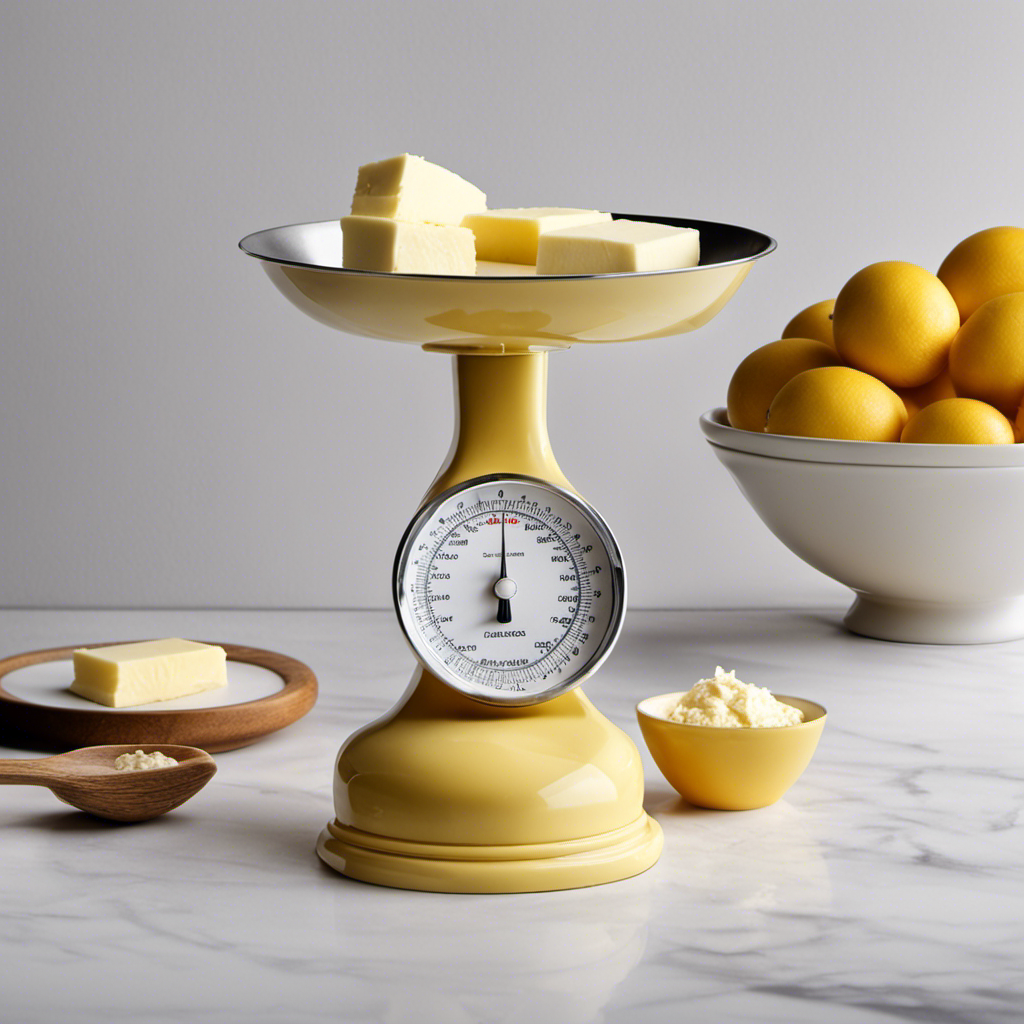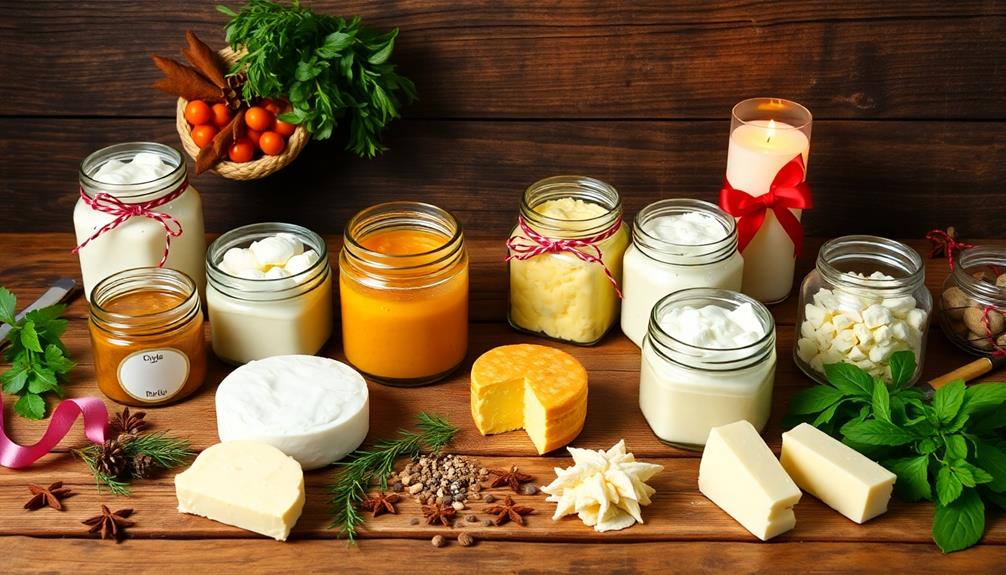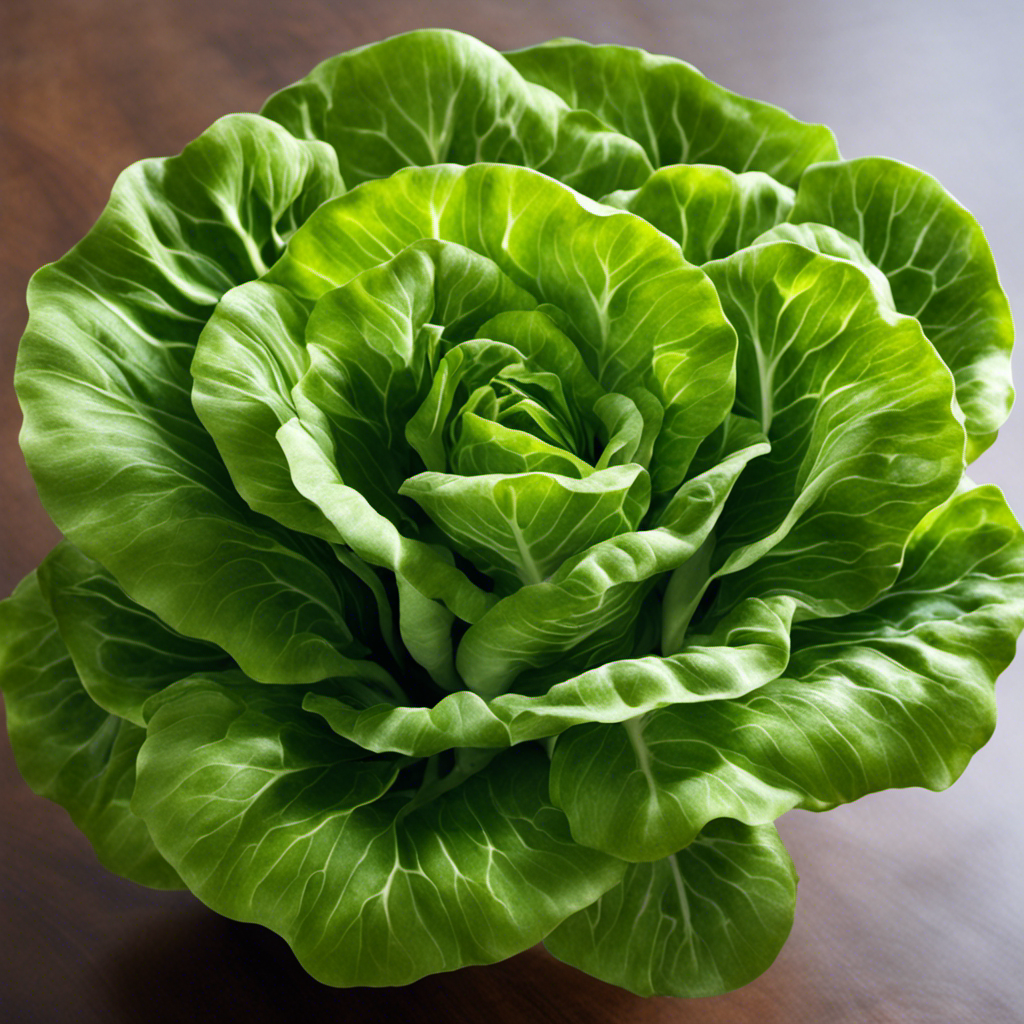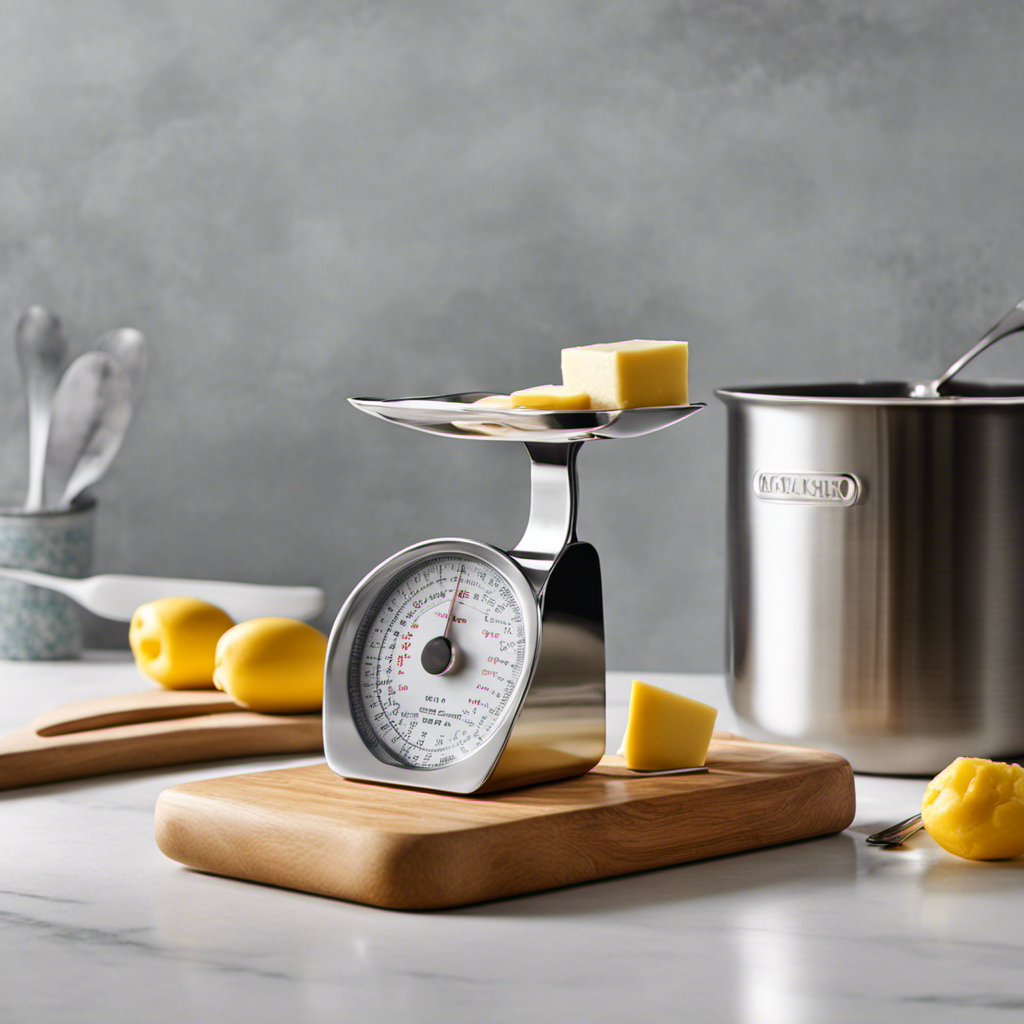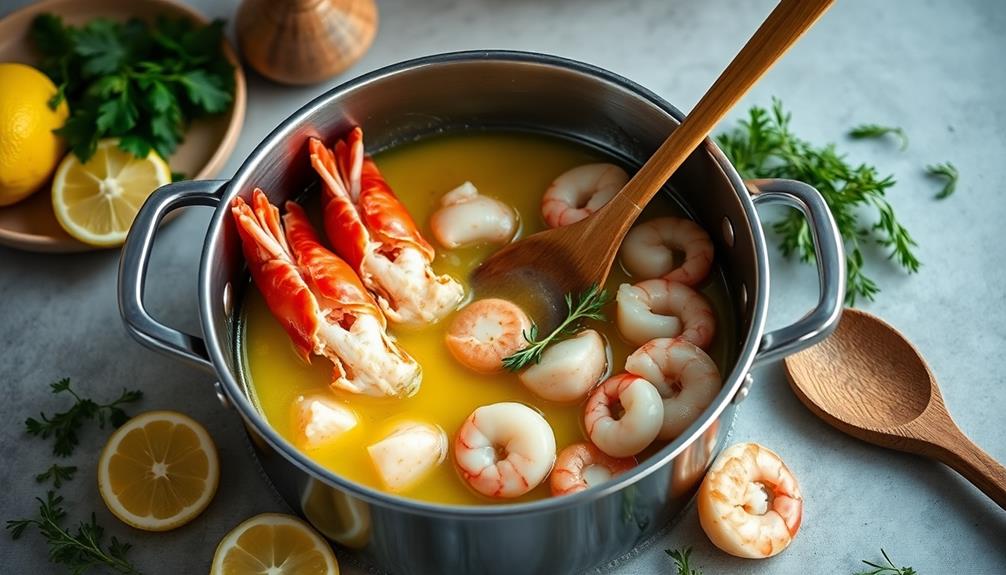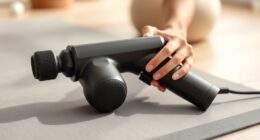I’ve often pondered, how many tablespoons amount to 1/3 cup of butter? It’s among those minor cooking enigmas that might have you puzzled while you’re in the midst of preparing a dish.
But fear not, because in this article, I’m going to unravel the conversion for you. We’ll dive into the tablespoons to cups ratio, learn how to determine the exact amount of butter needed, and explore the best techniques for converting butter measurements in your favorite recipes.
So, let’s get started and put an end to this buttery conundrum once and for all!
Key Takeaways
- There are 5 and 1/3 tablespoons in 1/3 cup of butter.
- Accurate measurement is crucial for baking and cooking.
- Substitutes for butter include coconut oil, avocado, Greek yogurt, and applesauce.
- Using a kitchen scale or measuring cups ensures accurate measurements for butter and butter alternatives.
Understanding the Conversion
To understand the conversion, you need to know that there are 5 and 1/3 tablespoons in 1/3 cup of butter.
When it comes to measuring butter equivalents, it’s essential to have the right conversions for cooking. Converting butter for cooking can be tricky if you don’t know the correct measurements. However, knowing that there are 5 and 1/3 tablespoons in 1/3 cup makes it easier. This information allows you to easily calculate how much butter you need for your recipe.
Whether you’re making cookies, cakes, or savory dishes, having the correct measurements is crucial for achieving the desired outcome. Understanding the conversion from tablespoons to cups ratio is vital in ensuring that your recipes turn out just right.
Tablespoons to Cups Ratio
The ratio for converting tablespoons to cups is 16 to 1. Understanding conversions is essential when it comes to cooking and baking.
When a recipe calls for a certain amount of butter in tablespoons, it can be helpful to know how many cups that would be. By knowing the ratio of 16 tablespoons to 1 cup, you can easily determine the equivalent amount.
For example, if you need 4 tablespoons of butter, that would be 1/4 cup. Similarly, if the recipe calls for 8 tablespoons, that would be 1/2 cup. It’s important to understand these conversions, especially when using butter substitutes.
Now that we know the tablespoons to cups ratio, let’s move on to determining the amount of butter needed.
Determining the Amount of Butter
When it comes to baking or cooking, accurately measuring butter is crucial for achieving the desired results. To help with this, a butter conversion chart can be a handy tool, providing measurements in both tablespoons and cups.
Additionally, learning how to measure butter accurately using a kitchen scale or the markings on the butter wrapper can further ensure precise measurements.
Lastly, for those who are looking for alternatives to butter, there are a variety of substitutes available, such as margarine, coconut oil, or applesauce, each with its own unique flavor and texture.
Butter Conversion Chart
You’ll find a helpful butter conversion chart that provides the number of tablespoons in 1/3 cup of butter. Understanding the different types of butter can greatly enhance your cooking and baking experiences.
Here are four key benefits of using butter in recipes:
-
Flavor: Butter adds a rich and creamy taste to dishes, enhancing the overall flavor profile.
-
Texture: Butter helps create a tender and moist texture in baked goods, making them more enjoyable to eat.
-
Browning: Butter promotes browning, resulting in a beautiful golden color on the surface of your dishes.
-
Binding: Butter acts as a binder, helping ingredients stick together and creating a cohesive final product.
Measuring Butter Accurately
To measure butter accurately, remember to use a kitchen scale for precise measurements. This is especially important when you are baking and need to follow a recipe precisely. Measuring butter substitutes can be a bit tricky, as different substitutes have different consistencies. However, by using a kitchen scale, you can easily measure the exact amount of butter substitute required.
Here is a handy table that shows the butter measurement equivalents in baking:
| Amount of Butter | Equivalent in Tablespoons |
|---|---|
| 1/4 cup | 4 tablespoons |
| 1/3 cup | 5 1/3 tablespoons |
| 1/2 cup | 8 tablespoons |
| 1 cup | 16 tablespoons |
| 2 cups | 32 tablespoons |
Substitutes for Butter
If you’re looking for alternatives, there are several substitutes that can be used in place of butter in your baking recipes. Here are four options to consider:
-
Coconut oil: Coconut oil is a popular choice for baking as it has a similar texture to butter and adds a subtle coconut flavor to your creations. It also contains healthy fats and has been linked to numerous health benefits.
-
Avocado: Mashed avocado can be used as a replacement for butter in certain recipes, like brownies or cookies. It adds a creamy texture and provides a dose of heart-healthy monounsaturated fats.
-
Greek yogurt: In recipes that call for butter, you can swap it with an equal amount of Greek yogurt. This will reduce the fat content while adding moisture and a tangy flavor.
-
Applesauce: Applesauce works well in recipes that require moisture, like cakes and muffins. It adds natural sweetness and helps to keep your baked goods moist.
Converting 1/3 Cup to Tablespoons
When it comes to converting 1/3 cup to tablespoons, it’s important to know the conversion ratio.
In order to accurately measure ingredients for a recipe, having the correct measurements is crucial. Accurate measurement ensures that the recipe turns out as intended and helps to maintain consistency in cooking and baking.
Conversion Ratio for 1/3 Cup
The conversion ratio for 1/3 cup of butter is approximately 5 and 1/3 tablespoons.
To help you understand butter measurements and convert butter for cooking, here are four key points:
-
Butter is typically sold in sticks, with each stick being equal to 1/2 cup or 8 tablespoons.
-
To convert from cups to tablespoons, multiply the number of cups by 16. So, 1/3 cup of butter is equal to 5 and 1/3 tablespoons (1/3 x 16 = 5.33).
-
If a recipe calls for a specific amount of butter in cups, but you only have sticks, you can easily convert by dividing the number of cups by 0.5. For example, 1 cup of butter is equal to 2 sticks or 16 tablespoons (1 / 0.5 = 2 x 8 = 16).
-
It’s always important to double-check your conversions and measurements to ensure accuracy in your cooking.
Understanding butter measurements and being able to convert them will help you follow recipes and achieve delicious results in your culinary endeavors.
Importance of Accurate Measurement
Accurate measurement is crucial for achieving consistent and delicious results in cooking. When it comes to baking, precision becomes even more important. Baking is a science, and slight variations in ingredients can greatly affect the outcome of your baked goods.
This is where using a kitchen scale can be incredibly beneficial. A kitchen scale allows you to measure ingredients by weight, rather than volume. This is especially useful when it comes to dry ingredients like flour, where the density can vary greatly. By weighing your ingredients, you can ensure that you are using the exact amount required in a recipe, resulting in perfectly baked treats every time.
However, using a kitchen scale is just one method of accurate measurement. Another commonly used tool is the measuring cup, which I will discuss in the next section.
Using a Measuring Cup
To accurately measure ingredients like butter, you can use a measuring cup. Here are four steps to help you measure butter alternatives using a digital scale:
- Place your digital scale on a flat, stable surface.
- Turn on the scale and make sure it is set to the unit of measurement you prefer, such as grams or ounces.
- Place a container on the scale and press the ‘tare’ or ‘zero’ button to reset the scale to zero.
- Add your butter alternative to the container until you reach the desired weight.
Using a digital scale ensures precise measurements, especially when dealing with butter alternatives that may have different densities or consistencies. This method allows you to be more accurate in your baking and cooking, resulting in better-tasting dishes.
Measuring Butter With Precision
When measuring butter with precision, make sure you use a digital scale for more precise results. This is especially important when working with recipes that require precise measurements of butter alternatives or when converting butter amounts for savory dishes.
Using a scale allows you to accurately measure the exact weight of the butter, ensuring your recipe turns out just right. When substituting butter alternatives, such as margarine or oil, it’s important to know the conversion ratio.
For example, if a recipe calls for 1/2 cup of butter and you want to use oil instead, you would need to use 1/2 cup of oil. By measuring butter with precision, you can confidently make substitutions and create delicious dishes without compromising on taste or texture.
Tips for Accurate Measurements
Make sure you’re using the right measuring utensils for precise results every time you cook. Here are four tips to help you achieve accurate measurements:
-
Use measuring spoons: When it comes to measuring small amounts of ingredients like spices or baking powder, using measuring spoons ensures accuracy. Make sure to level off the ingredient for precise measurement.
-
Convert grams to teaspoons: If a recipe calls for a certain amount of an ingredient in grams, but you only have measuring spoons, you can easily convert grams to teaspoons. Use an online conversion tool or a conversion chart to get the correct measurement.
-
Follow the recipe instructions: Pay close attention to the recipe’s instructions for measuring. Some recipes may require ingredients to be packed into the measuring cup, while others may call for a level measurement.
-
Double-check your measurements: Before adding an ingredient to your dish, double-check your measurements to ensure accuracy. This small step can prevent any mishaps and guarantee the best results.
By following these tips, you’ll be able to measure your ingredients accurately and create delicious dishes every time.
Now, let’s move on to converting butter measurements.
Converting Butter Measurements
When it comes to measuring butter, there are some key points that can make the process easier.
One important thing to know is the measurement equivalents for butter, such as how many tablespoons are in a cup. Converting tablespoons to cups can be a helpful skill to have, especially when following recipes that call for specific amounts of butter.
Additionally, there are some simple techniques that can simplify butter measurements, making it quicker and more efficient to measure out the right amount for your culinary creations.
Butter Measurement Equivalents
To measure out 1/3 cup of butter, you’ll need to know how many tablespoons are equivalent. Here are some tips for measuring accurately and understanding butter substitutes:
- One stick of butter is equivalent to 8 tablespoons or 1/2 cup.
- To measure 1/3 cup of butter, you’ll need 5 and 1/3 tablespoons.
- If you don’t have a tablespoon measurement, you can use a knife to cut off 5 and 1/3 tablespoons from a stick of butter.
- If you prefer to use grams, 1/3 cup of butter is approximately 76 grams.
Measuring butter accurately is important for baking and cooking, as it can greatly affect the texture and taste of your recipes. By understanding butter substitutes and using the correct measurements, you can ensure the success of your culinary creations.
Converting Tbsp to Cups
Remember, it’s helpful to know that 1/3 of a cup is approximately equal to 5 and 1/3 tablespoons. Understanding butter consistency and the impact of using different fats in baking is crucial for achieving the desired results in your recipes. When it comes to measuring butter, it’s important to be precise. To simplify the process, you can use the following table to convert tablespoons to cups:
| Tablespoons | Cups |
|---|---|
| 1 | 1/16 |
| 2 | 1/8 |
| 3 | 3/16 |
Simplifying Butter Measurements
You can simplify measuring butter by using a kitchen scale to weigh it instead of relying on tablespoons or cups. Here are four tips for simplifying your butter measurements:
-
Use a kitchen scale: Weighing butter ensures accuracy and consistency in your recipes. Simply place a bowl on the scale, reset it to zero, and add your desired amount of butter.
-
Convert to grams: Many recipes provide butter measurements in grams. If you prefer using tablespoons or cups, a quick conversion chart can help you determine the equivalent amount of butter in grams.
-
Soften butter properly: Softening butter to the right consistency is crucial for accurate measurements. Leave it at room temperature for about 30 minutes, or use a microwave at low power in short bursts.
-
Try butter substitutes: If you’re looking to reduce your butter intake or have dietary restrictions, consider using butter substitutes like margarine or coconut oil. Just remember to adjust the measurements accordingly.
Common Mistakes to Avoid
One common mistake to avoid is using the wrong measurement conversion when substituting butter in a recipe.
When it comes to measuring butter alternatives, it’s important to be precise. Many people make the mistake of assuming that one cup of butter is equivalent to one cup of a butter alternative, like margarine or shortening. However, this is not the case.
Butter is denser than most alternatives, so when substituting, it’s crucial to use the correct conversion. For example, one cup of butter is equal to 16 tablespoons, while one cup of margarine or shortening is only equivalent to 14 tablespoons.
This difference may seem small, but it can greatly impact the outcome of your recipe. So, always double-check your measurements to avoid any common measurement mistakes.
Converting Butter in Recipes
When substituting butter in a recipe, it’s crucial to use the correct conversion to ensure the desired outcome. Here are some tips for measuring butter substitutes and converting butter for cooking:
-
Use a kitchen scale: Weighing the butter substitute will give you the most accurate measurement. Many recipes provide the weight of butter needed, so this method ensures consistency.
-
Check the package: Butter substitutes often come in sticks or tubs with markings indicating tablespoons or cups. Use these markings as a guide when measuring the substitute.
-
Use a measuring cup: If your recipe calls for butter in cups, measure the substitute using a liquid measuring cup. Fill it to the desired level, ensuring accuracy.
-
Adjust for moisture content: Keep in mind that different butter substitutes may have varying moisture levels. Adjust the recipe accordingly to maintain the desired texture and consistency.
Adjusting Butter for Different Quantities
To adjust the amount of butter, simply increase or decrease the quantity according to the recipe’s requirements. When it comes to adjusting butter quantities, it’s important to have a clear understanding of butter measurement equivalents. Here’s a helpful table to make things easier:
| Butter Quantity | Equivalent in Cups | Equivalent in Tablespoons |
|---|---|---|
| 1/4 cup | 4 tablespoons | 12 tablespoons |
| 1/2 cup | 8 tablespoons | 24 tablespoons |
| 1 cup | 16 tablespoons | 48 tablespoons |
Converting Butter Measurements for Baking
By using the helpful table provided, you can easily adjust the amount of butter needed for your baking recipe. Understanding butter ratios is key to achieving the perfect texture and flavor in your baked goods.
Here are the benefits of using butter in baking:
-
Rich flavor: Butter adds a delicious richness and depth of flavor to your baked goods that other fats simply can’t match.
-
Moisture: Butter contains water, which helps to keep your baked goods moist and tender.
-
Texture: Butter contributes to the flakiness and crumb structure of pastries and pie crusts, resulting in a delightful mouthfeel.
-
Browning: Butter has a high fat content, making it perfect for achieving a golden brown crust on your baked goods.
With these benefits in mind, it’s clear why butter is a staple ingredient in baking. So go ahead, grab that measuring cup and get ready to create some delicious treats!
Frequently Asked Questions
Can I Use Margarine Instead of Butter in This Conversion?
Sure, you can use margarine instead of butter in this conversion. However, keep in mind that margarine and butter have different properties. Margarine may affect the texture of baked goods, so it’s important to consider the pros and cons.
How Do I Measure Butter Without a Measuring Cup?
To substitute butter in baking recipes, you can use margarine or oil. To measure butter without a measuring cup, you can use tablespoon measurements or cut the butter into tablespoons.
Can I Use a Kitchen Scale to Measure the Butter Instead?
Sure, I could use a kitchen scale to measure butter, but it won’t give me the precise answer I need. Measuring cups have advantages like accuracy and convenience that a scale can’t match.
What Is the Equivalent Amount of Butter in Grams or Ounces?
To find the equivalent amount of butter in grams or ounces, you can use a kitchen scale. Weigh the butter and convert the measurement to grams or ounces using a conversion chart.
Are There Any Tips for Softening Butter Quickly for Recipes?
When it comes to quickly softening butter for recipes, there are a few helpful tips I’ve learned. One method is to grate the cold butter using a cheese grater, which speeds up the process. Another option is to microwave the butter for a few seconds at a time, checking frequently to avoid melting it completely. These alternative methods can be a game-changer in the kitchen!
Conclusion
So, now you know that there are 5 and 1/3 tablespoons in 1/3 cup of butter. It’s important to remember that measuring accurately is crucial when it comes to cooking and baking.
Some may argue that converting measurements can be a hassle, but with the right tools and knowledge, it can be a breeze. To make things even easier, here’s a visual representation of the conversion:
1/3 cup of butter = 5 and 1/3 tablespoons
With this information, you can confidently navigate any recipe that calls for butter and ensure that your measurements are spot on.
Happy cooking!
